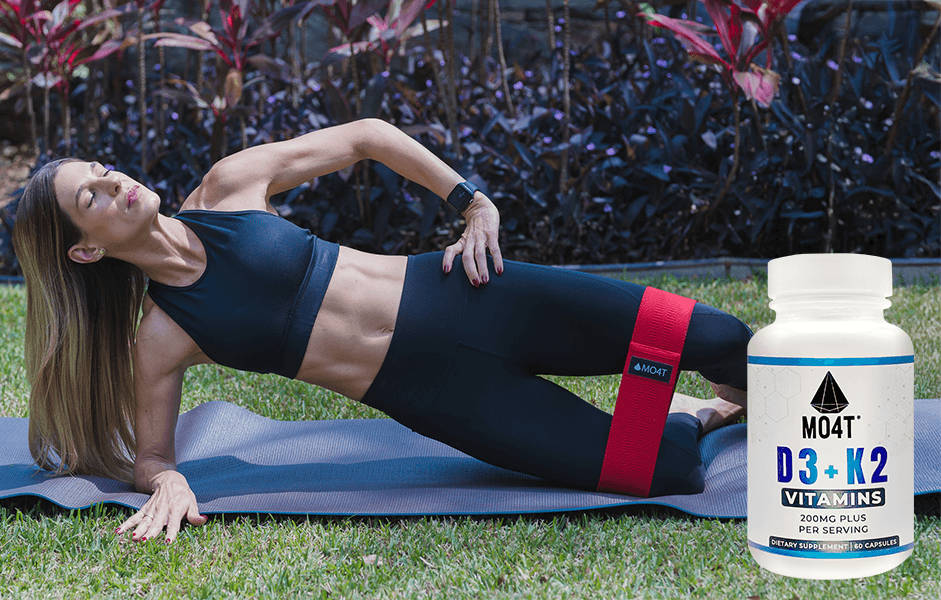
Your vitamin D levels decide if the calories eat turn to fat or muscle

For years we've known vitamin D is fatsoluble and stored in our adipose tissue. A pivotal 2017 study confirms it: obesity is linked to lower blood levels of vitamin D,
partly because excess fat sequesters it . But here's the twist: vitamin D deficiency can also promote fat gain and metabolic dysfunction, creating a vicious cycle.
Vitamin D in fat tissue: storage vs. activity
Vitamin D is absorbed or produced via sunlight and then partly stored in fat cells.
Although obese individuals accumulate more total vitamin D in adipose tissue,
their serum 25OHD levels are often lower, not due to poor absorption but because the vitamin is diluted across a larger volumen ( Source ).
What’s more, vitamin D is not inert in fat tissue — it actively controls inflammation, fat cell behavior, and insulin sensitivity through its receptor, VDR. In effect, deficiency may worsen metabolic health, while inadequate vitamin D can promote fat accumulation.
Vitamin D's role in energy balance and glucose homeostasis
Vitamin D regulates adipose tissue function, reducing proinflammatory cytokines like IL6 and TNFα and boosting antiinflammatory adiponectin. It's also intricately involved in fat metabolism and insulin sensitivity.

So when vitamin D is low, the risks for weight gain, chronic inflammation, and insulin resistance go up—and vice versa.
Why Vitamin D matters in the body
Vitamin D plays essential roles in:
1. Calcium & bone health: Regulates calcium and phosphate absorption via VDR, reducing the risk of fractures.
2. Immune function: Modulates innate and adaptive immune responses.
3. Muscle strength & balance: Low levels correlate with muscle weakness and
fall risk in older adults.
4. Mood regulation: Linked to serotonin production and seasonal mood
disorders.
5. Metabolic health: Low vitamin D is associated with metabolic syndrome risk
and waist circumference, particularly in Indigenous Australian populations.

What levels do you need?
Global recommendations vary:
- US RDA: 600 IU/day for most adults (800 IU if over 70).
- Europe & EFSA: 600 IU/day, upper limit 4,000 IU.
- Target serum level: Aim for ≥50 nmol/L (20 ng/mL); many experts prefer 75–100 nmol/L (30–40 ng/mL).
- Obesity factor: People with higher body fat often need 2–3× more vitamin D to raise serum levels equivalently.
Is sunlight enough?
Sun exposure is the best natural source, but many factors limit it:
- Skin pigmentation, latitude, season, sunscreen, and age reduce production.
- UV-derived vitamin D plateaus to prevent overdose.
-
Obesity dilutes vitamin D, meaning sunlight alone often isn’t enough.
So for many—especially those with higher fat mass—supplementation is needed to maintain healthy levels.
Vitamin D3+K2: true effective pairing
Pairing D3 with vitamin K2 (as menaquinone-7) is scientifically justified:
- D3 boosts calcium absorption but doesn’t regulate its destination.
- K2 activates proteins like osteocalcin and MGP, directing calcium to bones and away from arteries ( Source ).
-
Combined supplementation shows better bone density, arterial health, and
reduced calcification than either vitamin alone ( Source ).
MO4T Vitamin D3 + K2: smart supplementation
MO4T's Vitamin D3 + K2 combines high-potency 5,000 IU D₃ with 100–200 µg K₂
(MK7) in a third-party tested formula. Perfect for those with fat-related vitamin D
sequestration or suboptimal sun exposure, it supports:
- Strong bones & teeth through proper calcium utilization
- Cardiovascular integrity by preventing calcium misplacement
- Immune, metabolic, and cognitive health
And consistent with research-backed evidence.
Supplement wisely. Monitor your serum 25OHD levels (and if possible, K2 status),
especially if you carry higher body fat or get little sun. With the right intake—sun, diet, and smart supplementation—you harness vitamin D's full potential.



